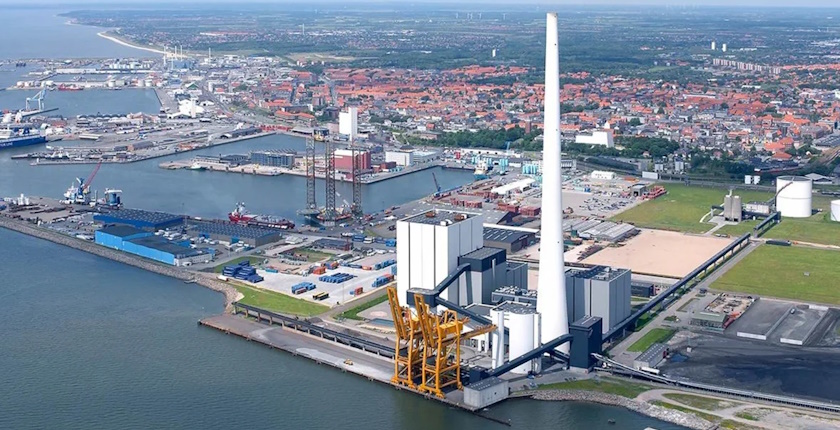
Photo: Ørsted
Denmark is left with a single coal power plant as Ørsted closed its last one. The only coal plant in the United Kingdom is ending operations on September 30. The list of European countries with such facilities drastically shrunk over the past few years.
When market forces trample business plans, coal phaseouts tend to be expedited. Denmark, which has the highest share of wind power in electricity generation in the world, now has one coal plant left, struggling with heavy losses, as energy giant Ørsted has just shut down its last facility of the kind. Britain has scheduled its exit for this month. Slovakia closed its last such facility in March.
Just a few years ago governments of European countries were hesitating to determine deadlines for the end of the use of the solid fossil fuel. In the meantime, owners of coal plants including state-owned power utilities have increasingly been calling it quits, facing competition from renewables and suffering from CO2 emissions costs and other environmental requirements.
Coal capacities in Denmark to be replaced by cleaner technologies
At the end of August, Denmark-based energy company Ørsted shut down Esbjerg, its last coal-fired combined heat and power (CHP) plant. It is located in the country’s west. Since 2006, the utility has been transitioning to certified sustainable biomass, the announcement adds.
Danish authorities mandated in October 2022 that Ørsted maintain operations at unit 3 in Esbjerg and to restart the decommissioned unit 4 at Studstrup, which also primarily used coal, and unit 21 at its Kyndby facility, which burned oil, too. The latter two were officially closed together with Esbjerg, the utility pointed out.
A large wood pellet silo at Studstrup is being rebuilt after a fire. It is set to be completed by the end of the year and Ørsted said it would no longer have any coal as a reserve fuel.
Nordjylland Power Station or Nordjyllandsværket is the last coal plant in Denmark. The operator of the CHP facility is Aalborg Forsyning, owned by the Aalborg (Ålborg) Municipality. The utility is working to replace the heating segment with heat pumps, thermal storage solutions and other technologies such as waste heat.
Aalborg Forsyning suffered an aftertax loss of DKK 270 million (EUR 36.2 million) in 2024. It highlighted Nordjylland’s operations as having the most negative effect. The CHP facility is due to close in 2028.
Britain to exit coal power club on September 30
In late June, Uniper’s Ratcliffe-on-Soar power station received its last coal shipment. Britain’s last coal plant is about to end operations on September 30.
The plan is to redevelop the site as a zero carbon technology and energy hub. The company said last year it would produce low-carbon hydrogen there and gradually reach 500 MW in electrolysis capacity by the end of the decade.
In early 2015, the UK was producing over a third of its electricity from coal, after which the share was swiftly halved and kept shrinking. Such power plants were used almost only in the winter season.
From dust, ash dumps to green hydrogen or battery storage
Slovakian energy company Slovenské elektrárne ended production at its CHP plant Vojany in March, completing the country’s coal phaseout. The facility barely worked during its last few years online. The job became easier with the completion of the Mochovce 3 nuclear reactor.
Remedial works and cleanup began immediately to clear up the area. Possible alternatives are renewables, battery storage, a small modular reactor, green hydrogen production and the use of existing waste ash in the construction industry, Slovenské elektrárne has revealed.
Slovenia’s last coal plant nearing bankruptcy
The list of countries generating power from coal has drastically shrunk over the past few years.
Slovenian state-owned power utility Holding Slovenske elektrarne or HSE said that the country’s sole coal plant Termoelektrarna Šoštanj (TEŠ) is likely to become insolvent next year. The government is preparing a law to keep it afloat again. One of the biggest issues, like with Denmark’s last coal plant, is to maintain heating in the area.
Bulgaria has pulled a similar move for its only such state-owned facility.
Croatia and Romania are among the few European Union member states that also have coal phaseout deadlines past 2030, but they are unlikely to hold out that long either. Only Germany, Poland, the Czech Republic, Serbia, Montenegro, Bosnia and Herzegovina, Kosovo* and Turkey would remain in the continent, but the situation is changing fast.


















Be the first one to comment on this article.